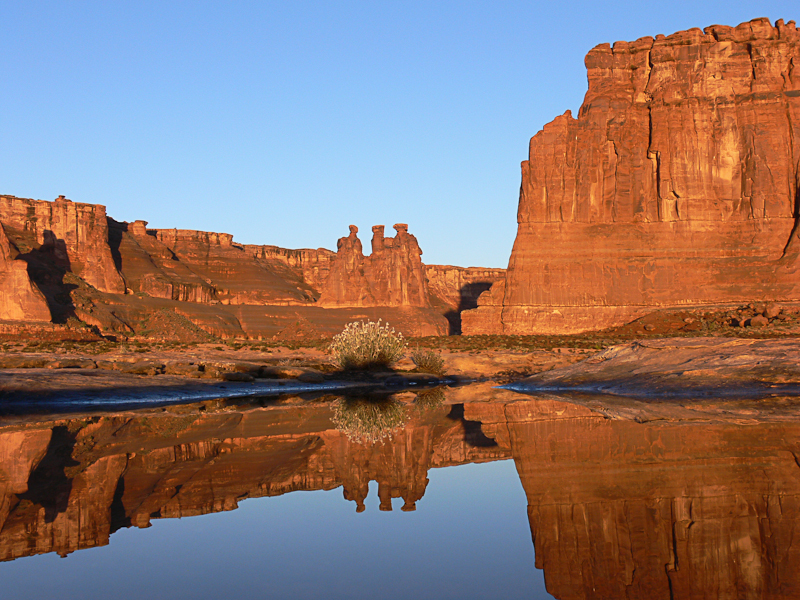We Love Arches

Delicate Arch - a different perspective
A Desert Rock Garden
Arches National Park is located in east-central Utah, about 100 miles west of Grand Junction, Colorado. Arches is located within the geological province known as the Colorado Plateau, which is a distinct piece of continental crust located within Utah, Colorado, New Mexico, and Arizona. It consists of layers of rock, primarily sandstone, laid down over the past 320 million years or so, when this area was located on the western shore of the ancient continent, Pangea, just north of the equator.
This is the famous red rock canyon country: the high desert of the Colorado Plateau. Everyone who visits this region wonders how the natural arches and other rock formations were formed, and the gulf of time revealed by the Colorado River and its tributaries as they cut through the rocks on their journey to the sea. Because this is a harsh desert environment, the rocks are not obscured by vegetation, making it possible to study the layers like reading the pages of an open book. We study the rocks and try to understand what the environment was like when the layers were originally deposited, and we marvel at the natural forces and the time required to form them into the shapes we see today.
An Open Book on Earth's Past
The exposed and accessible geology offers a unique opportunity to study the Earth's geological past. The challenge is to bring the overwhelming landscape into sharp enough focus to see the details that need to be understood in order to accurately read the Earth's story in this region. We think it's a study worthy of a lifetime, but one lifetime is only enough time to scratch the surface in exploring this region and unlocking its secrets.
People who visit Arches and Canyonlands generally end up learning something about its geology, because the rocks are exposed and easy to study, and the arches and other wierd shapes and odd formations inspire visitors with curiosity about how they formed.
The rock layers, or "strata", consist primarily of different types of sandstones, in a colorful palette that ranges from white to tan, pink, orange, purple, black, and deep rust-red. The colors come from the minerals, such as iron oxide - rust - in the rocks. The rocks were originally deposited in a variety of environments, from the bottom of ancient oceans, to swamps, grasslands, and sand dunes from several deserts.
Why We Keep Coming Back
Don and I have been hiking across these rock layers for decades. People always want to know why we keep going to the same place on our vacations: we even spent 5 years living in Moab. Isn't that enough of one spot, when there are so many beautiful places to see all over the world? Especially since you can see Arches National Park from the road in a day?
In a word: No. We'll never get enough of it. Why? Much of our enjoyment comes from simply being in such a incredibly beautiful place, which I think most people can appreciate. But the other part of our enjoyment comes from trying to piece together what the ancient environments were like when these layers were originally being deposited. There are many mysteries in these rocks!
It is impossible to find geology books that describe the details we began to notice on our hikes: the clusters of parallel thin lines, the purple circles, concretions, and columns, and many strange fossils. Fran Barnes, the Moab trailblazer and author of dozens of guidebooks and maps of the region, was the only person we've found who also noticed the same level of details. Much of our knowledge of the geology of the Arches and Canyonlands area of the Colorado Plateau comes from his books.


